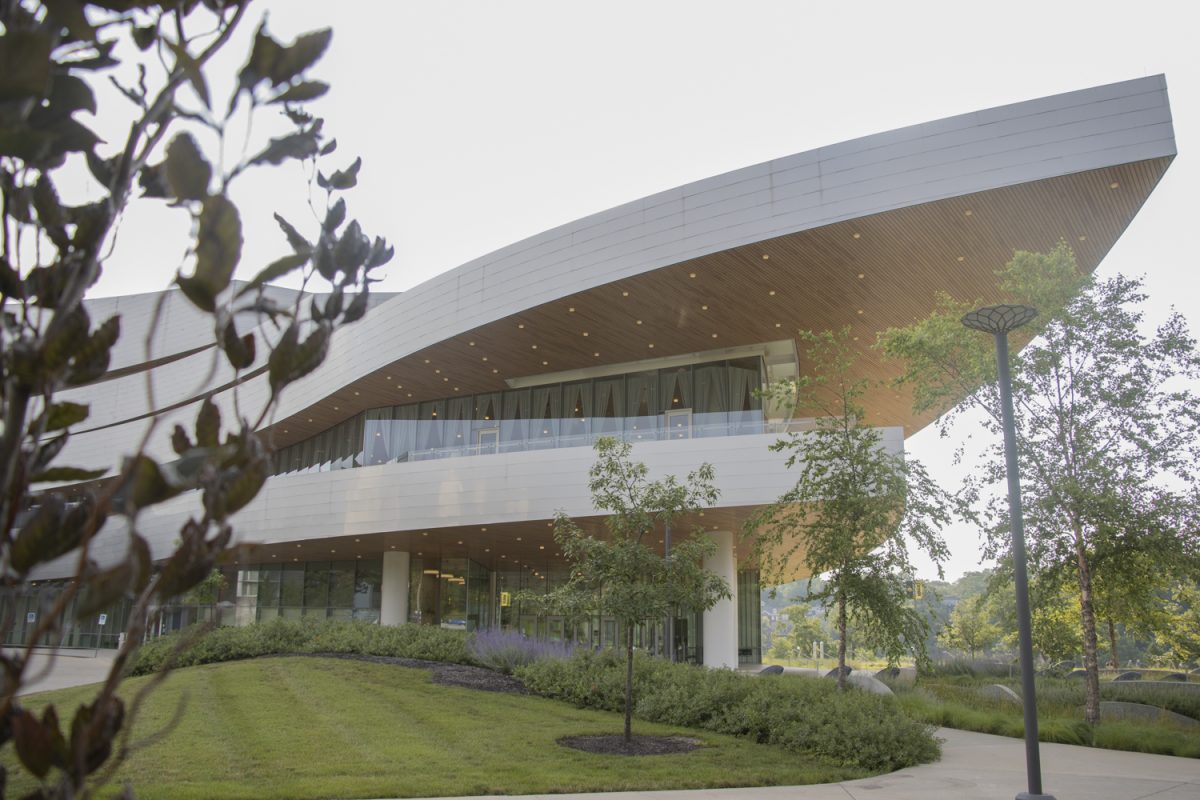As a lover of Greek mythology all my life, I knew how the story of “Hadestown” would likely end. Despite never seeing the musical before, I was familiar with the tale of Orpheus and Eurydice — on which the musical is based — and could guess at different plot points that came up through the musical’s many jazzy and folk-based songs.
However, even knowing the ending, this story was still worth telling, and I was thrilled to be able to take the “Road to Hell” alongside a packed Hancher Auditorium.
“Hadestown” is an immersive and impactful story that makes a mark on all who see it. From clever and engaging sound and lighting to the remarkable performances from the actors, the show drew viewers in until nearly two hours passed in what seemed like the mere blink of an eye.
Orpheus, played by Bryan Munar in Hancher’s production, is a young musician who dreams of what the world would be like if only the seasons could be regulated and less volatile. With his character, he brings a sense of hope made even stronger by his growing love of Eurydice, played by Megan Colton — a love which one can’t help but root for, as Orpheus faces the Underworld itself to protect her.
Eurydice herself is also a strong lead. While she may make rash choices, I feel as though her motivations are understandable — given her circumstances — and found myself rooting for her and Orpheus to stay together.
One of my favorite moments in the show was at the very end of Act One when Orpheus sings the ballad “Wait for Me,” pleading with Eurydice to wait for him in the Underworld while he works to find her.
In the song, Orpheus strives to make up for his past mistakes of being too absorbed in his world to hear his love. He also makes it clear he values his love for Eurydice above all else. This moment is enhanced during the production by the lighting.
While Orpheus sings, three lamps descend from the stage’s ceiling, swinging around our protagonist. These lights are interwoven with the show in such a way that the actors can interact with them directly, pointing their light sometimes at Orpheus and sometimes at the audience.
RELATED: Review | Dear DI reader, Hancher’s ‘Dear Evan Hansen’ is a good show and here’s why
Another impressive use of lighting comes at the very end of the play when Orpheus is tasked with leading Eurydice out of the Underworld. However, he cannot look back at her. During the penultimate number, “Doubt Comes In,” the stage is almost completely dark, with Orpheus being the one standing in the center of a beam of light.
The only other characters who appear during this scene are the three Fates, who allow Orpheus to believe he is being tricked through their schemes. This causes the audience not to see Eurydice behind him — only occasionally hearing her voice call out. We, like Orpheus, are anticipating what will happen next.
Alongside the story of Orpheus and Eurydice is the tale of Hades and Persephone — the King and Queen of the Underworld who remain at odds for most of the musical. Nickolaus Colon plays a great Hades, while Namisa Mdlalose Bizana brings Persephone to life.
Persephone shines in a green dress during the parts of the musical in which it is summer, while her outfit darkens to become a similar-looking black dress when she descends to Hadestown. In the production, the goddess’s love of summertime shines through, as when as the complex and bittersweet feelings she harbors for her husband.
Hades, as well, is a complicated character, who offers the desperate Eurydice a job in her time of need. My favorite moment of his comes again toward the end of the show, when he is debating what to do about the two lovers, to remain the picture of a powerful king.
Overall, Hancher’s “Hadestown” was a resounding success, with the final standing ovation being one rightly deserved.



